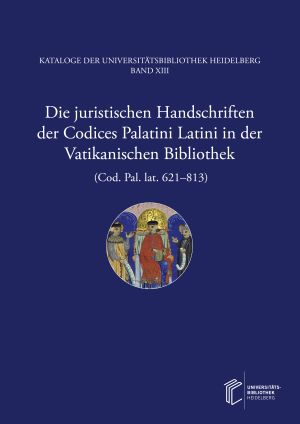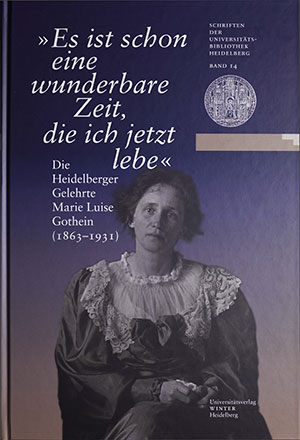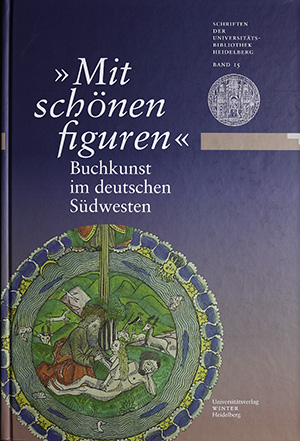Metzger, Wolfgang
Die juristischen Handschriften der Codices Palatini Latini in der Vatikanischen Bibliothek (Cod. Pal. lat. 621–813)
This volume presents the Latin legal manuscripts of the Bibliotheca Palatina, most of which are now in the Biblioteca Apostolica Vaticana. This collection has special value due to the manuscripts from Romanic countries it contains, which document the rediscovery and annotation of late antique legal writings and the systematisation of ecclesiastical law collections that shaped Europe from the High Middle Ages onwards. Other codices show close-ups of local practices and interests, for example in the form of codes of procedure, sample forms or personal text collections. The manuscripts cover the 9th to 16th centuries, but have their focus in the 13th to 15th centuries.
"Es ist schon eine wunderbare Zeit, die ich jetzt lebe": Die Heidelberger Gelehrte Marie Luise Gothein (1863–1931). Eine Ausstellung der Universitätsbibliothek Heidelberg
Marie Luise Gotheins "Geschichte der Gartenkunst" erschien 1914 und ist bis heute ein Standardwerk. In Preußen geboren, verdankte sie ihrem Mann, dem Nationalökonom und Kulturwissenschaftler Eberhard Gothein, ihr akademisches Leben in Karlsruhe, Bonn und Heidelberg. Früh emanzipierte sich die Mutter von vier Söhnen jedoch mit eigenen anglistischen Studien und Übersetzungen. Die Stadt am Neckar wurde der Autorin zur "dritten letzten Heimat". Briefe und Texte von Max und Marianne Weber sowie von Edgar Salin belegen Gotheins Beitrag zum "Heidelberger Geist".
Jedoch sind dies nur Facetten einer vernachlässigten Persönlichkeit der deutschen Wissenschaftsgeschichte. Neben den Gärten beschäftigten sie religions- und kulturhistorische Fragen, später wandte sie sich dem asiatischen Kulturkreis zu und lernte Sanskrit, um das indische Drama zu erforschen. Für ihre Studien reiste sie nach England, Italien, Griechenland, Indonesien, China und Japan. Der Katalog zur Ausstellung stellt Gotheins Leben, Werk und Reisen in einer Gesamtschau vor.
"Mit schönen figuren": Buchkunst im deutschen Südwesten
The transition from handwritten to printed books occurred in stages between the middle of the 15th century and around 1500. For over half a century both forms existed side by side. The relationship between the handwritten and the printed book ranged, via changing and reciprocal influences, from pure imitation to competition between the technical and functional means of expression.
The focus of both catalogue and exhibition are artistic book decorations from specific genres: brush painted ornate decorations and borders, figurative pen and ink drawings and overlay miniatures are contrasted with series of wood cuts and printed vignettes.
The exhibition guides visitors through the years 1430 to 1530, using selected examples from the collections of the Württembergian State Library Stuttgart and the University Library Heidelberg. As well as the technical and cultural interplay of this transition phase with relevant examples of the appearance of books, the roles of those commissioning, selling and owning books are also presented. They often significantly influenced the expressive form and content of book decoration as books were also a form of status symbol.





